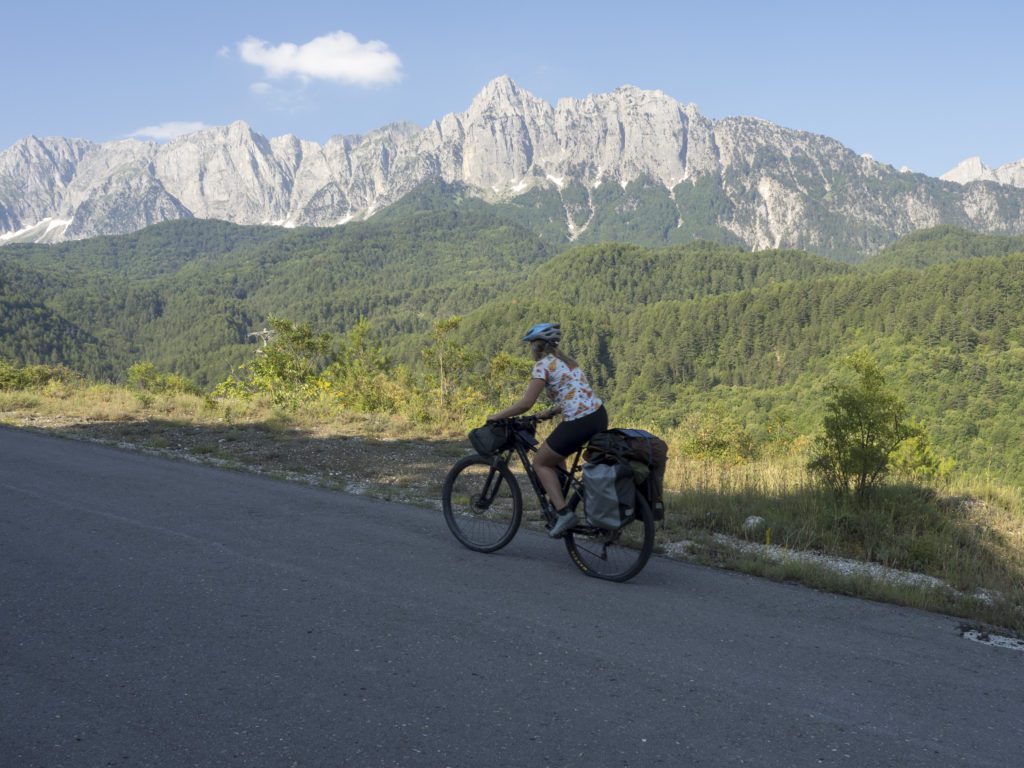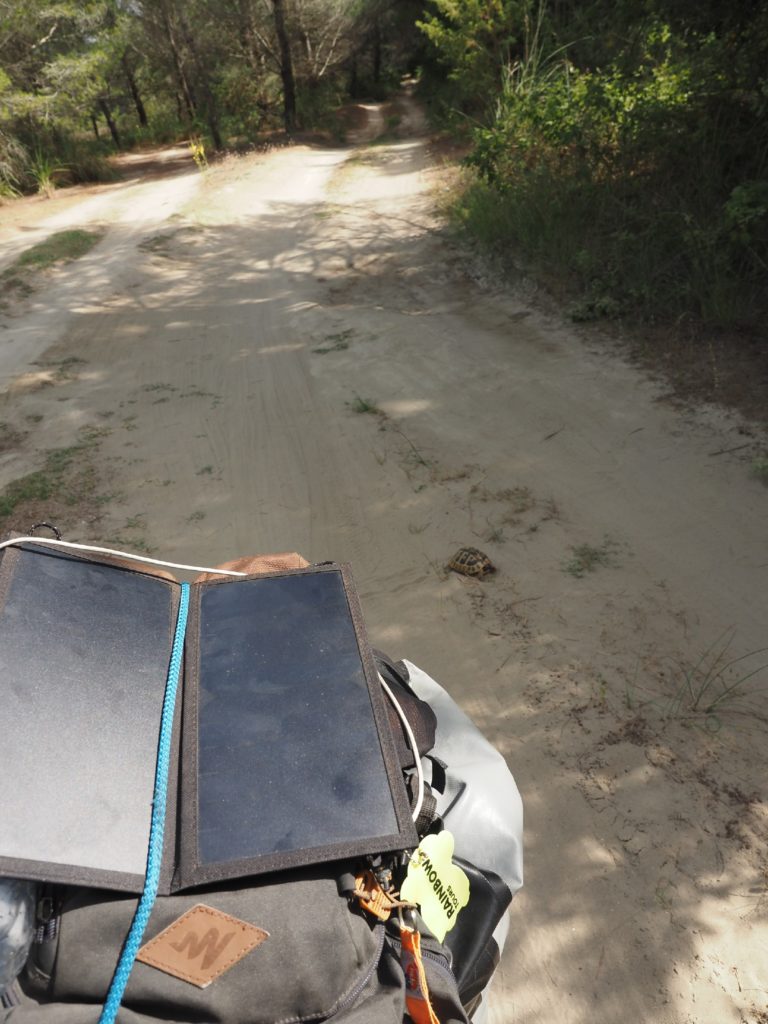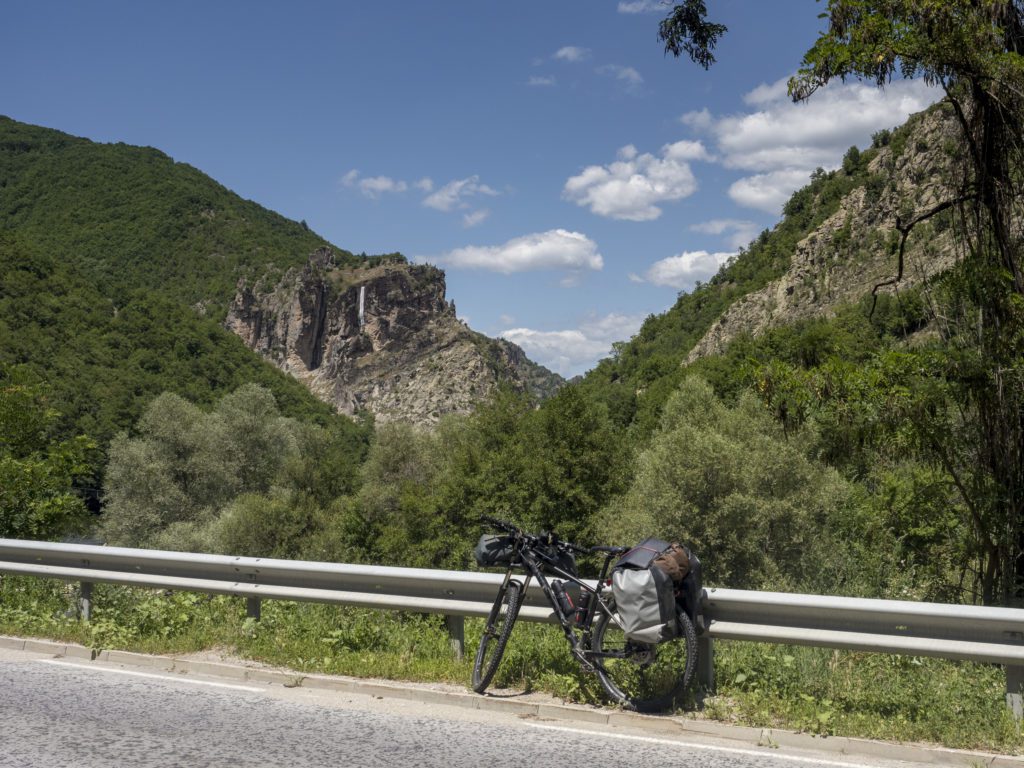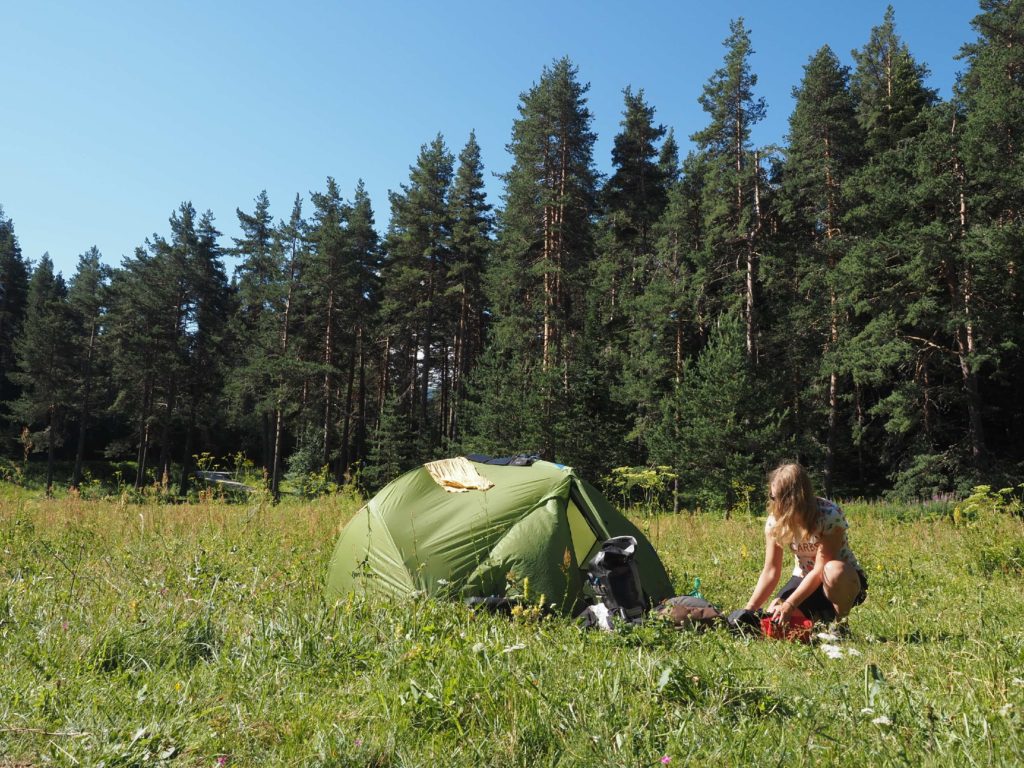After many years of relying only on power banks during my cycling trips, I decided to finally become more self-sufficient and buy a solar panel. Is a solar panel a good way to charge your electronics on a bicycle tour? Which one should you buy?
In this article, I will help you decide if you need a solar panel for your bicycle travels and briefly review the one I am using – Anker PowerPort Lite 15W.

Do you need a solar panel for bicycle touring?
I have survived four years of cycle touring carrying only a 20 000 mAh power bank. Even on my trip across Kyrgyzstan, I didn’t have a solar panel or dynamo hub. I just had to ensure that every couple of days, I stayed at a hostel, guest house or with a Warmshowers host to recharge my phone and camera.
And to be honest, it was great! It was a terrific way to get screen detox because I had to save my phone battery.
If you don’t plan to wild camp most of the time, and if your phone battery is still decent and doesn’t die after just a few hours of use, you can easily survive with a power bank.
But after a while, I got tired of having to consider electricity access in my tour planning. That’s when I ordered a solar panel.

Solar panel or dynamo hub
I was torn between getting a solar panel or installing a dynamo hub. Most people I met on the road had the latter and it seemed like a more reliable and weather-independent option. I would produce energy all the time, as long as I was cycling. I was a bit worried about the drag and being slowed down but other people ensured me they don’t feel it at all. But I wasn’t keen on going through the hassle of installing a dynamo hub.
I was very tempted to buy the bottle dynamo of PedalCell which seemed easier to install, especially on a bike with disc brakes but almost 400 euros was out of my budget.
I started looking into solar panels. They seemed a more reasonable investment, especially since I could use them during hiking and camping trips. I knew my upcoming expeditions would be in sunny and warm countries, so a solar panel made more sense.
How to choose the right solar panel for bicycle touring?
Check the wattage
Modern smartphones, tablets and other devices need quite a lot of energy. The higher that wattage, the faster they will charge. 15 W is the bare minimum if you use your solar panel mostly to keep your phone, camera and bicycle lights charged. If you’re also carrying your laptop, you will need something stronger.
Pick the right size
The bigger the surface the sun shines on, the more energy you can produce. But placing a large solar panel on your luggage rack might be difficult, so you might have to compromise here. Think also about how much extra weight you want to carry – maybe it will make more sense to get another power pack instead of a 1-kilo-heavy solar panel if you’re not going to be in the wild for too long.
Think about where you will store the device while charging
Some solar panels have a convenient pocket where you can store your phone and cables while charging. Check how this pocket is designed. For example, in my Anker PowerPort Lite 15W, the pocket is only closed with a velcro strap, so I never put my electronics there but put them in my backpack under the solar panel.
Check the connections
The golden standard in portable solar panels is at least two USB ports, one of which usually has a higher voltage to charge modern smartphones. Think about what devices you use and if your solar panel can charge all of them. Many modern cameras can be charged with a USB cord but if you have an older one, make sure to have enough spare batteries.
Be aware that most solar panels don’t have an integrated battery, so you’ll need an external power pack anyway.
Anker PowerPort Lite 15W Solar Panel review
When I was looking for a solar panel for my bicycle tours, everybody recommended Goal Zero solar panels. Unfortunately, the 20-watt version of Goal Zero Nomad was super expensive (almost 150 euros) and over 1 kilogram heavy. Looking for a low-budget solar panel, I run into Anker PowerPort Lite 15W. This model is not in production anymore, but I found one in a shop in my neighbourhood.
The price of 50 euros was very tempting, so I didn’t think twice. Especially since this model is exceptionally lightweight – it’s nearly impossible to find a 15W solar panel that weighs 365 grams!

I was overall happy with it. When folded, it took up very little space in my bag. During the day, I placed it on my luggage rack and could keep my power bank charged. Then, in the evening, I could plug in my phone, my Garmin watch, my e-book reader, and my camera into the power bank and recharge them overnight.
In Albania and Greece, with plenty of sun and perfect weather, the charging was smooth, and I almost always managed to recharge my power bank to 100 %. Thanks to the dual USB, I can simultaneously charge the powerpack and, for example, the phone if I need to.
It takes about 20 minutes to charge my phone at 10 % in direct sunlight.

In shade and on cloudy days, charging is unfortunately much weaker and slower.
The power output is too small to charge bigger devices like a laptop, so if you’re a bicycle-touring digital nomad, you’ll need to find something stronger or ensure to stay in places with electricity whenever you have to work.
At the moment, Anker PowerPort Lite 15W is sold out, but if you happen to see it somewhere and are looking for a low-budget solar panel for bicycle touring, I definitely recommend you get it!

You can also check out its stronger, slightly heavier and a bit more expensive brother Anker PowerPort Lite 21W.
Do you use a solar panel on bicycle tours? If yes, let me know in the comment which model and if you’d recommend it. This will help other cyclists find a good tool to keep their devices charged!
Pingback: How to take better bike touring photos - Wobbly Ride
Thanks for this , very helpful